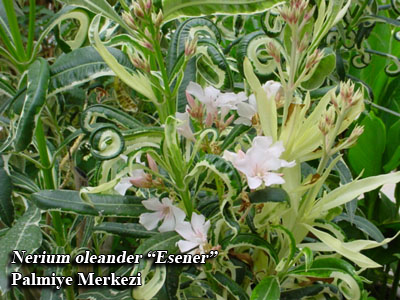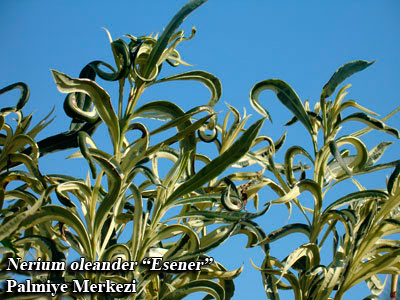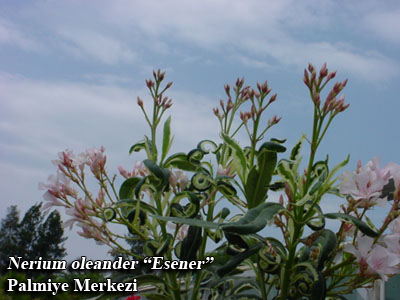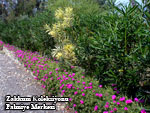 |
| |
|
OLEANDER COLLECTION “NERIUM OLEANDER” |
 |
 |
|
|
Oleander, an attractive and robust plant, has in addition to its pink coloured Meditterrenean (endemic) varieties also other tropical varieties. Many of the tropical varieties have smells. With hybridisation programmes more than 500 varieties have been obtained. There are more than 230 varieties in the French National Collection. In our country in the absence of relevant societies and clubs, oleander varieties have not received much attention. To our knowledge, with 30 varieties, our collection is the largest in Turkey. The most prominent of the collection is Nerium oleander “Esener” It has sickle shape variegated leaves and pinkish-white simple flowers. As it first grown in our nurseries, it is not available anywhere else in the world, but from our nursery. It will be on sale in the second half of 2007. |
.jpg) |
||
.jpg) |
||
.jpg) |
|
What you didn’t know about Oleanders |
|
Oleander “Nerium oleander” is well known by the world for its toxicity. In Turkey it is incorrectly believed to be a useful plant for fighting “cancer”. With its colourful flowers, and contrary to its innocent appearence, all parts of this attractive shrub type plant are poisonous. The toxicity of this plant was known since early history. Many horses of Alexander the Great 's army were killed in Iran by the the retreating soldiers who poisoned their water with oleanders. Similarly soldiers who barbecued meat on skews made from Oleander plants were unable to take part in the war. Deaths related to ingestion of Oleanders are rare. Nevertheless in Australia some fatalities were reported after ingestion of Oleander flowers, particularly by children. In 1986 an elderly woman was reported to have died with severe heart failure after having drunk an infusion made with Oleander leaves by error, instead of Eucaliptus leaves. Oleander being a big shrub sometimes becomes host to, as some other plants and trees. Mistletoe “viscum album” is known as a parasitic plant and used in medicine for its blood pressure reducing properties. However, if Mistletoe taken from an Oleander host, may have received poisenous sap from Oleander and itself can be poisonous. Some insects are not affected by the Oleander poison. Danaid type butterflies suck sap from Oleanders and keep it in their special cells. Birds eating these butterflies suffer from vomiting and diarrhoea, and they never touch these brilliantly coloured butterflies again. In the Middle Eastern Countries where Oleander is endemic, a type of grasshopper sucks and stores sap from Oleander, and projects it, to its enemies when in danger. This is a rare example of animals using plants to their advantage in nature. When burnt in open fires and stoves Oleander also gives toxic fumes, and this requires attention. |
|
Below: A Selection From Our Oleander Collection |





.jpg)
.jpg)
.jpg)
.jpg)
.jpg)
.jpg)
.jpg)
.jpg)
.jpg)
.jpg)
.jpg)
.jpg)
.jpg)
.jpg)
.jpg)
.jpg)
.jpg)
.jpg)
.jpg)
.jpg)
.jpg)
.jpg)
.jpg)
.jpg)
.jpg)
.jpg)
.jpg)
.jpg)
.jpg)
.jpg)
.jpg)
.jpg)
.jpg)